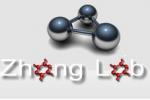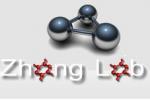PROTEIN STRUCTURE AND FUNCTION PREDICTION
Show as: Icons - List - Order by: Novelty - Popularity - Name

Add to my favorites
Remove from my favorites
Jpred3 is a web applicaion that predicts secondary structure from a protein sequence.
...continue to read
Add to my favorites
Remove from my favorites
TReverse Translate accepts a protein sequence as input and uses a codon usage table to generate a DNA sequence representing the most likely non-degenerate coding sequence. A consensus sequence derived from all the possible codons for each amino acid is also returned. Use Reverse Translate when designing PCR primers to anneal to an unsequenced coding sequence from a related species
...continue to read
Add to my favorites
Remove from my favorites
I-TASSER server is a web application for protein structure and function predictions. Models are built based on multiple-threading alignments by LOMETS and iterative TASSER simulations. I-TASSER (as 'Zhang-Server') was ranked as the No 1 server in recent CASP7 and CASP8 experiments. The server is in active development with the goal to provide accurate structural and function predictions using state-of-the-art algorithms. References: Ambrish Roy, Alper Kucukural, Yang Zhang. I-TASSER: a unified pl
...continue to read
Add to my favorites
Remove from my favorites
PSIPRED is a highly accurate method for protein secondary structure prediction, including MEMSAT - a transmembrane topology prediction method and GenTHREADER - a sequence profile based fold recognition method.
...continue to readQUARK is a computer algorithm for ab initio protein folding and protein structure prediction, which aims to construct the correct protein 3D model from amino acid sequence only. QUARK models are built from a small fragments (1-20 residues long) by replica-exchange Monte Carlo simulation under the guide of an atomic-level knowledge-based force field. QUARK was ranked as the No 1 server in Free-modeling (FM) in CASP9. Since no global template information is used in QUARK simulation, the server is
...continue to read
Add to my favorites
Remove from my favorites
PMP gives access to various models computed by comparative modeling methods provided by different partner sites, and provides access to various interactive services for model building, and quality assessment.Protein Model Portal is a component of the Nature PSI Structural Biology Knowledgebase
...continue to read
Add to my favorites
Remove from my favorites
LOMETS (Local Meta-Threading-Server) is a locally installed meta-server for protein structure prediction. It generates 3D models by collecting consensus target-to-template alignments from 9 locally-installed threading programs (FUGUE, HHsearch, PAINT, PPA-I, PPA-II, PROSPECT2, SAM-T02, SPARKS, SP3). References: S. Wu, Y. Zhang. LOMETS: A local meta-threading-server for protein structure prediction. Nucleic Acids Research 2007; 35: 3375-3382
...continue to read
Add to my favorites
Remove from my favorites
MUSTER (MUlti-Sources ThreadER) is a new protein threading algorithm to identify the template structures from the PDB library. It generate sequence-template alignments by combining sequence profile-profile alignment with multiple structural information. References: S. Wu, Y. Zhang. MUSTER: Improving protein sequence profile-profile alignments by using multiple sources of structure information. Proteins: Structure, Function, and Bioinformatics 2008; 72: 547-556.
...continue to read
Add to my favorites
Remove from my favorites
SEGMER is a segmental threading algorithm designed to recoginzing substructure motifs from the Protein Data Bank (PDB) library. It first splits target sequences into segments which consists of 2-4 consecutive or non-consecutive secondary structure elements (alpha-helix, beta-strand). The sequence segments are then threaded through the PDB to identify conserved substructures. It often identifies better conserved structure motifs than the whole-chain threading methods, especially when there is no
...continue to read
Add to my favorites
Remove from my favorites
SVMSEQ is a new algorithm for protein residue-residue contact prediction using Support Vector Machines. References: S. Wu, Y. Zhang. A comprehensive assessment of sequence-based and template-based methods for protein contact prediction. Bioinformatics, vol 24, 924-931 (2008).
...continue to read
Add to my favorites
Remove from my favorites
BSpred is a neural network based algorithm for predicting binding site of proteins from amino acid sequences. The algorithm was extensively trained on the sequence-based features including protein sequence profile, secondary structure prediction, and hydrophobicity scales of amino acids. References: S Mukherjee, Y Zhang Protein-protein complex structure prediction by multimeric threading and template recombination. Structure, in press (2011).
...continue to read
Add to my favorites
Remove from my favorites
ANGLOR is a machine-learning based algorithm for ab initio prediction of protein backbone torsion angles. For a given amino acid sequence, the real-value backbone torsion angles (phi and psi) for each residue are predicted by the combination of the neural network training and the support vector machine. References: S. Wu, Y. Zhang. ANGLOR: A Composite Machine-Learning Algorithm for Protein Backbone Torsion Angle Prediction. PLoS ONE 2008; 3: e3400.
...continue to read
Add to my favorites
Remove from my favorites
BSP-SLIM is a blind molecular docking method on low-resolution protein structures. The method first identifies putative ligand binding sites by structurally matching the target to the template holo-structures. The ligand-protein docking conformation is then constructed by local shape and chemical feature complementarities between ligand and the negative image of binding pockets.
...continue to read
Add to my favorites
Remove from my favorites
EDTSurf is a open source program to construct triangulated surfaces for macromolecules. It can generate three major macromolecular surfaces of van der Waals surface, solvent-accessible surface and molecular surface (solvent-excluded surface), and identify cavities which are inside of macromolecules.
...continue to readREMO is a new algorithm for constructing protein atomic structures from C-alpha traces by optimizing the backbone hydrogen-bonding networks. References: Yunqi Li and Yang Zhang. REMO: A new protocol to refine full atomic protein models from C-alpha traces by optimizing hydrogen-bonding networks. Proteins, 2009, 76: 665-676.
...continue to readCOTH (CO-THreader) is a multiple-chain protein threading algorithm to identify and recombine the protein complex structures from both tertiary and complex structure libraries. It first generates complex query-template alignments by sequence profile-profile alignment assisted by the ab initio binding-site predictions from BSpred. The monomer structures from tertiary template library are then combined into the complex framework by structure superposition.
...continue to readHAAD is a computer algorithm for constructing hydrogen atoms from protein heavy-atom structures. The hydrgen is added by minimizing atomic overlap and encouraging hydrogen bonding. References: Yunqi Li, Roy Ambrish and Yang Zhang, HAAD: A Quick Algorithm for Accurate Prediction of Hydrogen Atoms in Protein Structures, PLoS One, 2009 4: e6701
...continue to read
Add to my favorites
Remove from my favorites
Protein Structure Database
AlphaFold allows: Visualize protein structure
There are 214,684,311 structures available on the AlphaFold DB website, including 48 complete proteomes available for bulk download.
...continue to read
Add to my favorites
Remove from my favorites
A Discovery Portal to Link Genetic Screening Outputs to Protein Sequence and Structure (Kwon S et al., Nature Methods 21, 1947, 2024). Genomics 2 Proteins portal is a human proteome-wide resource that maps 20,076,998 genetic variants onto 42,413 protein sequences and 77,923 structures, with a comprehensive set of structural and functional features.
...continue to readPage: 1





